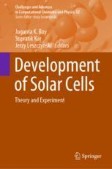Search
Search Results
-
The self-organizing vector of atom-pairs proportions: use to develop models for melting points
Atom-pairs proportions are the transparent quality of a molecule: if a molecule has two atoms of oxygen and three atoms of nitrogen, the atom-pair...
-
Physicochemical significance of ChemDraw and Dragon computed parameters: correlation studies in the sets with aliphatic and aromatic substituents
Quantitative Structure Activity Relationship (QSAR) requires the use of chemical descriptors which are either empirical or non-empirical. Although...
-
Modeling Enzyme-Substrate Interaction with Localization-Delocalization Matrices
Enzymes are life’s catalysts par excellence. They are incredibly efficient and are mainly composed of protein—save prosthetic groups and/or nucleic...
-
Transformer-CNN: Swiss knife for QSAR modeling and interpretation
We present SMILES-embeddings derived from the internal encoder state of a Transformer [
1 ] model trained to canonize SMILES as a Seq2Seq problem....
-
QSAR as a random event: criteria of predictive potential for a chance model
The CORAL software ( http://www.insilico.eu/coral ) was suggested as a tool to build up quantitative structure–property/activity relationships...

-
Application of thin-layer chromatography in the assessment of bioactivity properties of isatin derivatives
In the last 20 years, isatin and its derivatives stand out as promising precursors in the synthesis of new pharmacologically active compounds. Since...

-
New bounds for variable topological indices and applications
One of the most important information related to molecular graphs is given by the determination (when possible) of upper and lower bounds for their...

-
Prediction of molecular interactions and physicochemical properties relevant for vasopressin V2 receptor antagonism
We have developed two ligand- and receptor-based computational approaches to study the physicochemical properties relevant to the biological activity...

-
Machine learning to predict metabolic drug interactions related to cytochrome P450 isozymes
Drug–drug interaction (DDI) often causes serious adverse reactions and thus results in inestimable economic and social loss. Currently, comprehensive...

-
QSAR models for analgesic activity prediction of terpenes and their derivatives
In the present study, quantitative structure-activity relationship (QSAR) models were developed to predict analgesic activity of some mono-/bicyclic...

-
Inverse degree index: exponential extension and applications
The inverse degree index, also called inverse index, first attracted attention through numerous conjectures generated by the computer programme...

-
Application of QSPR Modeling in Designing and Prediction of Power Conversion-Efficient Solar Cell
The advancement of technology and industrialization demands clean, economic, and reliable energy sources that can be fulfilled by high-volume and...
-
Integrating concept of pharmacophore with graph neural networks for chemical property prediction and interpretation
Recently, graph neural networks (GNNs) have revolutionized the field of chemical property prediction and achieved state-of-the-art results on...

-
Explaining and avoiding failure modes in goal-directed generation of small molecules
Despite growing interest and success in automated in-silico molecular design, questions remain regarding the ability of goal-directed generation...

-
Design of bio-oil additives via molecular signature descriptors using a multi-stage computer-aided molecular design framework
Direct application of bio-oil from fast pyrolysis as a fuel has remained a challenge due to its undesirable attributes such as low heating value,...

-
Determination of the chain termination rate constants of the radical chain oxidation of organic compounds on antioxidant molecules by the QSPR method
A quantitative analysis of the structure-antioxidant activity relationship was performed for 128 derivatives of phenols, amines, uracil, benzopyrane,...
-
Revolution of Artificial Intelligence in Computational Chemistry Breakthroughs
The field of computational chemistry is one of many sectors that artificial intelligence (AI) has revolutionized in recent years. Chemists are now...
-
Web-Based Quantitative Structure–Activity Relationship Resources Facilitate Effective Drug Discovery
Traditional drug discovery effectively contributes to the treatment of many diseases but is limited by high costs and long cycles. Quantitative...

-
QSAR and QSAAR modeling of nitroimidazole sulfonamide radiosensitizers: application of small dataset modeling
In recent years, hypoxic cell radiosensitizers have evolved as potential molecules in the diagnosis of cancer and in clinical radiotherapy....

-

